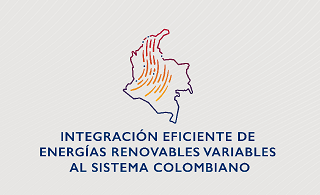Helping the Colombian Energy Sector Integrate Renewables
Colombia is undergoing a transformation in its electricity sector as a result of economic, technological and environmental changes. Although the country has a highly developed energy sector with a sophisticated regulatory framework and well-established private sector participation, new trends and challenges have forced the Government to consider and develop new policies, regulations, programs and initiatives. As a result of these trends and challenges, as well as a strong policy push, it is expected that by 2023 the Colombian electrical system will need to integrate at least 2.5 GW of solar PV and wind plants onto its 16.6 GW capacity grid, which currently consists of 11 GW hydraulic generation, 4.6 GW thermal and approximately 1 GW from smaller plants.
Under our cooperative agreement with USAID, and under the coordination of USAID's Colombia Mission, USEA, together with NREL and Tetra Tech, and Colombian partners, have developed an online course to give Colombian energy-sector participants a comprehensive overview of the policies, tools and practices needed to successfully integrate renewable energy onto its electricity grid.
The objective of this course is to provide a program of capacity building activities to the electricity sector main stakeholders (distributors, generators, market operator and government) through a dedicated training program in variable renewable energy integration. The capacity building activities will address those topics that represent new challenges and opportunities for Colombia's energy sector related to the integration and operation of rapidly increasing levels of variable renewable energy (wind and solar in particular) into the system. A secondary objective of the course is to promote the participation of women in the energy sector in Colombia, to position them for a more complete understanding of the technical, economic, regulatory and policy elements to contribute and lead the integration of VRE in their firms.
Topics covered during the course include:
- Module 0: Course Introduction and Context-Setting
- Module 1: Key Future Trends related to Solar and Wind Integration 2020-2030
- Module 2: Policy, Planning, and Energy Market Case Studies for Efficient Integration of VRE
- Module 3: Economics and Regulation of Variable Renewable Energy
- Module 4: Distribution Sector Planning for VREs: The Increasing Role of VREs and End Users in the Electricity System
- Module 5: Implementing a Resilient Energy System: VRE, Battery Storage, Microgrids, and other Resilience Solutions
- Module 6: Beneficial Electrification of the Economy and the Transportation Sector
- Module 7: Leadership, Change Management
Participants of the first cohort of this course developed and presented an Action Plan on how they plan to implement what they have learned in the course to their job, division, or company. 51 Participants, including 36 women, who successfully completed course requisites were certified by IEEE and the course concluded with an in-person visit to NREL headquarters in Golden, Colorado, for a week of presentations and discussions on advanced topics for the 10 participants who most successfully completed these requisites.




